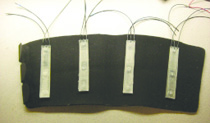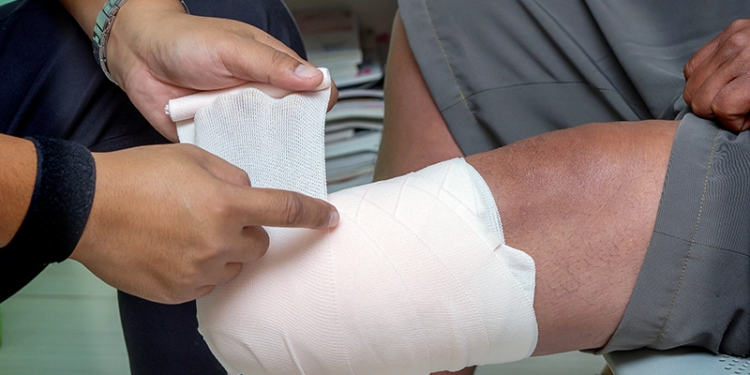University of California, Los Angeles (UCLA) researchers in the Henry Samueli School of Engineering and Applied Science have developed a tactile feedback device to help improve sensory awareness for lower-limb prosthetic users and individuals with peripheral neuropathy.
Working in UCLA’s Center for Advanced Surgical and Interventional Technology (CASIT), biomedical engineering graduate student Zach McKinney and postdoctoral fellow Bryan Nowroozi, PhD, have been making improvements to the device under the direction of Warren Grundfest, MD, UCLA professor of bioengineering, electrical engineering, and surgery. The latest version of the tactile feedback system, in development since 2007, consists of three functional blocks: a sensing module, a control module, and a tactile feedback module.
“The sensing module is basically a sensorized shoe insole that measures the distribution of forces on the bottom of the foot,” McKinney told UCLA Today. “That module transmits wirelessly [via a Bluetooth connection] to a central control module-a little microcomputer that the patient wears like a fanny pack. The microcomputer receives this data, processes it, executes a control algorithm, and then controls output.”

Interior view of the tactile feedback cuff,
including four silicon balloon actuator blocks.
Photograph courtesy of Zach McKinney.
That output, or tactile feedback module, takes the form of a cuff housing a set of pneumatically inflating silicon balloons that the patient wears on his or her thigh. The inflating balloons press against the patient’s skin and provide tactile feedback, “so you could almost think of it as dynamic Braille for the leg,” McKinney said.
McKinney and Nowroozi have been collaborating with the Naval Medical Center San Diego (NMCSD), California, whose staff has been testing the device on military service members who have lost lower limbs. “At heel strike, they get a sensation on one part of their leg; at toe strike, they get sensation on another part of their leg,” said Marilynn Wyatt, MA, PT, director of the NMCSD Biomechanics Laboratory. “This device tells their brain, basically, that their foot has hit the ground. It’s another kind of sensation, substituting for the missing sensory input.”
Initial testing of the prototype on a UCLA patient who has neuropathy found that the patient walked faster and took longer, more frequent steps, and he demonstrated better stability by taking narrower steps as well-measurements that McKinney and Nowroozi found encouraging. One of the most promising things Nowroozi said he noted when first joining the project last March was that changes seemed to occur with little training time, in some cases, only 20 minutes.
According to the researchers, they anticipate that a version of the technology will be commercially available in two years. The next stage in development will be a longitudinal therapy study with a patient wearing the device throughout the course of physical therapy.
“For quality-of-life improvements, you have to have people wearing it in the community, in the clinic, in the home environment, and to be able to monitor improvements in their activity levels and their stability and so forth,” McKinney said. “And that’s something we’re working toward.”
Editor’s note: This story was adapted from materials provided by UCLA Today.




